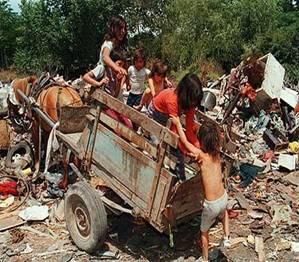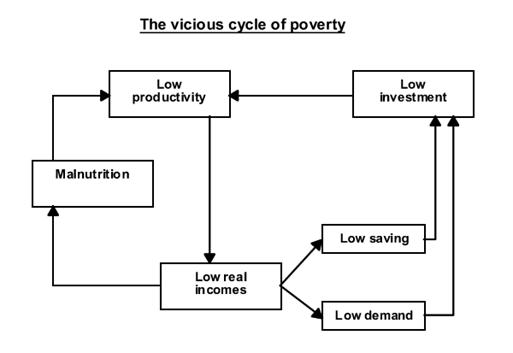Poverty cycle
 Poverty
and income inequality are major factors holding back the development of
many of the poorest countries on earth. Poverty is a grinding fact of
life.
Poverty
and income inequality are major factors holding back the development of
many of the poorest countries on earth. Poverty is a grinding fact of
life.
If you earn little, say just a few dollars a day, what chance
do you have of saving any money, or owning a bank account? The
acquiring of capital (including human capital) is impossible and the
cycle continues through each generation.
Poverty cycle
Poverty can be very difficult to reduce as many economies struggle to develop and find themselves in what is known as the 'poverty cycle trap'. To develop economically, countries need to invest in new and improved capital.
However, investment needs funding and this requires savings.
Countries with low income and low savings levels have a lack of funds for investment, which in turn leads to lower incomes.
This is a continuing spiral of cumulative causation. Low incomes lead to low investment levels, which mean even lower incomes.
Less developed countries need to break the cycle to develop, but how can this be achieved? This poverty cycle is shown in diagrammatic form in Figure 1 below.

Figure 1 The vicious cycle of poverty
In a virtuous cycle, higher
incomes will lead to higher savings and demand, enabling and
encouraging more investment, raising productivity and thus increasing
income.
When it comes to strategies and policies to encourage economic development, consider how the vicious cycle of poverty can be halted and a virtuous cycle put in its place.

This poverty is clearly shown in link below to Human Poverty Index (HPI) data. The HPI is a composite index measuring deprivations in the three basic dimensions captured in the human development index-a long and healthy life, knowledge and a decent standard of living.
The 2010 Human Development Index (HDI) Report introduced three new indices to capture important aspects of the distribution of well-being for inequality, gender equity and poverty. This composite index includes:
- The Inequality-adjusted Human Development Index
- The Gender Inequality Index (GII)
- The Multidimensional Poverty Index (MPI)